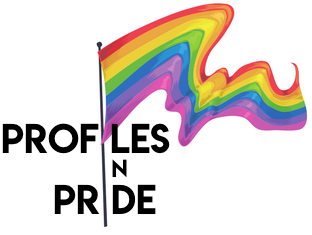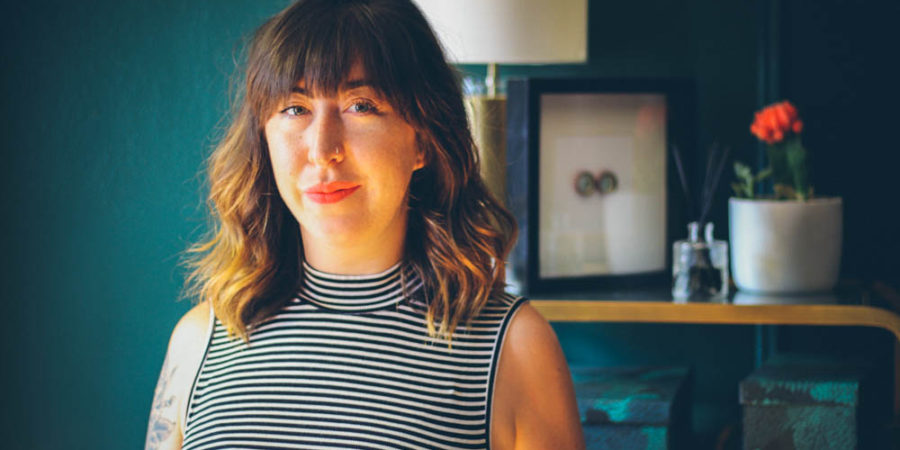Sarah Shalene Guilbeaux is a 26-year-old, out-and-proud queer woman in New York City who feels comfortably fluid with her sexuality and gender. But it wasn’t always this easy for her.
Guilbeaux grew up in a conservative, church-going family in Southern California. On top of that, her mother was a former beauty queen, so she felt immense pressure to fit a very specific mold of how she should look and act as a woman, and of course, who she was supposed to date.
In her late teens, Guilbeaux began making friends who were gay and started observing how their lifestyle conflicted with her church’s teachings. She struggled to understand how being gay could really be a sin.
With time, Guilbeaux began to pull away from the church. And after some self-reflection — and some encouragement from friends and lovers — she began to acknowledge that she herself wasn’t straight. After a breakup with a boyfriend in her early twenties, he encouraged her to get OkCupid and find a woman to date.
A few weeks later, she met Lauren, a trans woman who is now her wife. Guilbeaux, currently a freelance photographer and writer (see her beautiful work), says her relationship with Lauren has taught her so much about gender and has given her more freedom to explore and play with her own gender identity.
Here is Guilbeaux’s story of coming to terms with her identity, what “queer” means to her, finding and marrying her wife, and realizing that life is more enjoyable when we don’t fit cleanly into boxes.
Profiles in Pride: What was your journey to coming to understand your queerness?
Sarah Shalene Guilbeaux: My apologies in advance if my story gets tangled, because it’s messy, right? It’s never a clean line from point A to point B.
I think I had an idea that I was queer probably in my late teens. I started dressing pretty androgynously and just experimenting more with gender identity. Even though in the moment I didn’t realize it, I think looking back, I started really rejecting this performative femininity that was very prominent in my Southern California upbringing. My mom especially; my mom was a beauty queen in the ‘80s, so it was a lot of hair and makeup and that was very important to her, and she imposed that on me for a long time.
So when I was 17 or 18, I started experimenting with what it would feel like to just wear jeans and a flannel button-up. But I was still very embedded in the church. And I felt those convictions very deeply. And it was around that time that I started making friends that were gay, and that put me in a weird position, because I believed really deeply in the church, and I loved my friends.
The church I was going to was pretty conservative without being “pushy.” They would never really come out and say being gay is a sin, but it would be more of a very subtle, like, “Well, we just want you to live the life that God imagines for you,” which implies a lot more and is a lot messier. And I couldn’t wrap my head around it, so there was room for me to believe it wasn’t necessarily a sin.
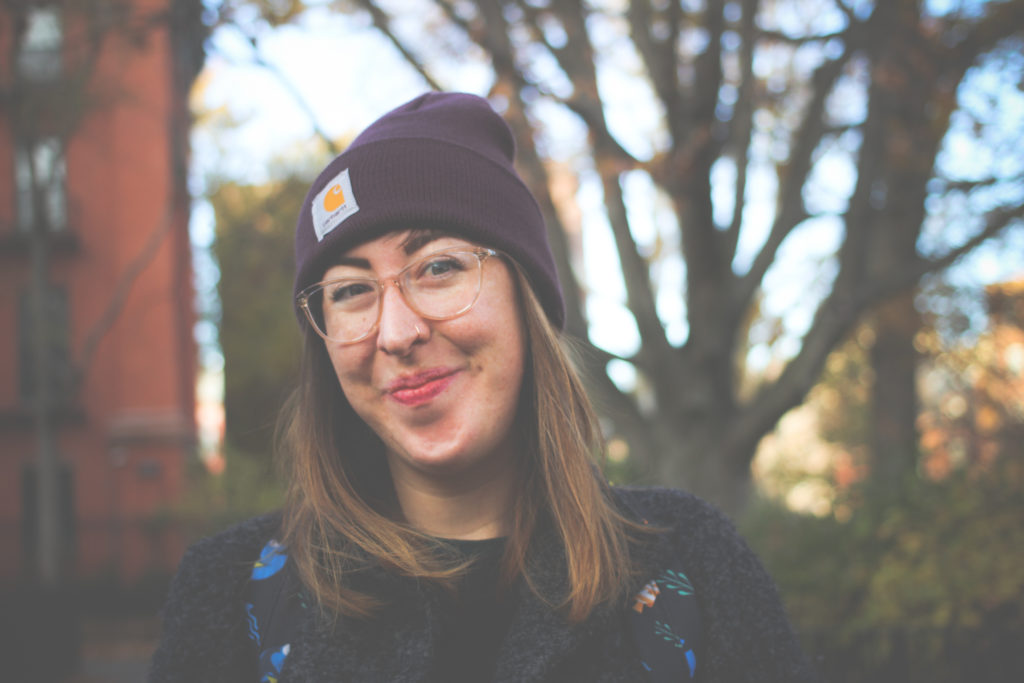
I was kind of a late bloomer, so I didn’t start dating until I was 18, really. My first boyfriend and I, we were together for almost three years, and in that time I confessed to him that I was attracted to women. He was down with that and was like, “Cool, we can potentially be open one day.”
There was always implied room that I could explore that if I wanted to. I just didn’t pursue it until I was 21 or so. And probably like the first time, I was newly single; we’d been engaged, and I broke off our engagement. And a female friend randomly kissed me, and I was just like, wait, what is this whole new world?
So that was kind of the moment. Well, actually the exact moment I’d define myself as queer came when one of my friends, Panda, who’s genderqueer/gender-neutral — I met them when I was 20. We met in the kitchen and we were talking about how I lived in a really big house with like 10 other people and the majority of the people in that house were gay. And so Panda asked me, “Well, what about you, are you gay?” And I said, “No, I’m straight.” And they gave me this inquisitive look and said, “Yeah, but not really, right?” It was like a lightbulb moment where was like, “Probably not really!”
So that’s kind of it. I continued to have flirtations with women but primarily date men, even though I always disclosed my attraction to women. At some point before I started dating this guy, I turned to him and was like, “Just so you know, I’m probably a lesbian.” And we continued to date off and on for two years!
PIP: When did you actually start dating women women?
SSG: So actually when that boyfriend and I broke up, I was living in Austin. When we broke up, he was a really good friend and we started talking about the kind of people we might want to start dating.
He was like, “Sarah, I think that you should start dating women.” I said, “You’re probably right.” And he kind of pushed me, and he said I should get on OkCupid and select women only. So I did, and the first person I met was Lauren, who is now my wife. So there had been sexual flings and definitely flirtations leading up to that point, but I had never actually dated a woman until I met Lauren.
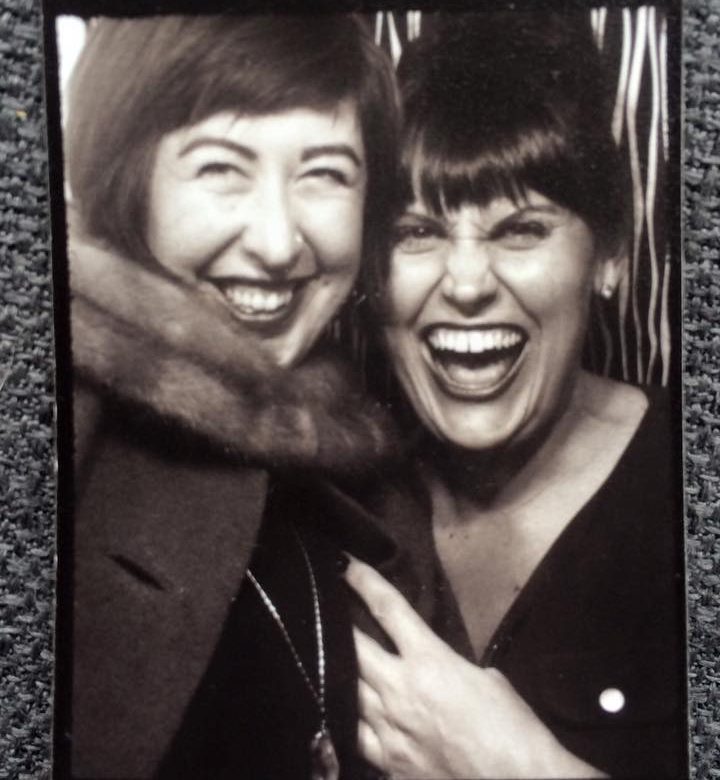
PIP: I know Lauren is transgender. What were your thoughts about dating a trans person for the first time?
SSG: Lauren actually didn’t have that disclosed on her profile, so when we met up for our first date, I didn’t know that she was transgender.
It sounds so silly in some regards, because I really didn’t understand that she was trans. We didn’t talk about it on our date. I just knew she was different, but my brain just didn’t put her in any kind of category. I wasn’t trying to differentiate any signs. I wasn’t looking for that, so I didn’t see that. I just saw Lauren.
And I really liked that she wasn’t this ultra high femme girl, because that’s not who I am, and that feels like too much pressure in a way. I just really liked her and I was very smitten.
Then she called me two or three nights before our second date. It’s already weird when someone just calls you out of the blue, so I was like, “What is this girl’s problem, why is she calling me, not texting me?” And I answered and she made small talk for 20 minutes. Then was like, “OK, so…?”
And she said, “I have something I need to tell you.” She just kind of spit it out, she was like, “I’m trans.” I had to ask myself if I knew what that was. Then I thought, OK, I know what trans is. Then I waited for this sort of red alarm to go off inside of me, and it didn’t. So I just paused and I just told her, “OK, I don’t think that’s a problem. But I have a lot of questions.”
She breathed out a sigh of relief and said, “That’s OK, I’m really open, I’m happy to answer any questions you have.” I think if I did have any hesitations about dating trans people before I met Lauren, it was mostly that I was going to say the wrong thing or not understand some of the struggles. I just didn’t understand truly what that meant and what that experience might be like to be a trans person and then also be in a relationship with a trans person.
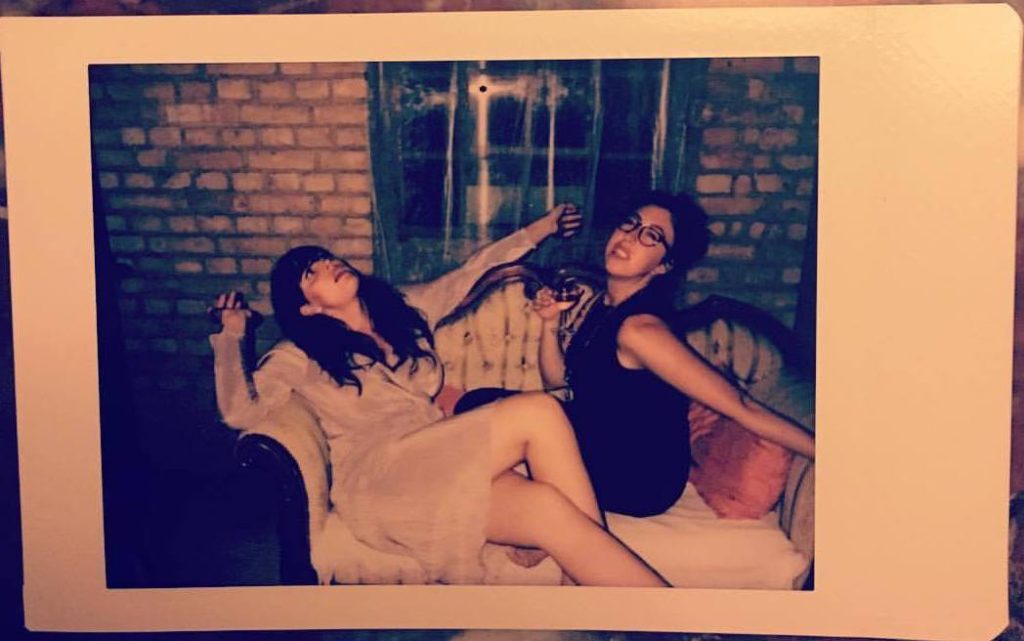
PIP: Since you primarily dated men before being with Lauren, what has it been like adopting the new identity of someone who is publicly partnered with a woman?
SSG: It hasn’t been as weird as I would have thought in my late teen years. To be completely honest, I am so shocked at how much I love my spouse and how much I like my spouse, that the fact that she’s a woman is so far down the list of things I’m surprised about in my marriage.
I just never knew that marriage could be this cool. Marriage always had seemed very much like settling to me, like a too safe of a space, where you just sort of lock down, hunker in, you’re stuck with this person and that’s it and you’re just kind of very insular. With Lauren, I’m so amazed at this marriage that we’ve built together, the fact that she’s a woman hardly comes into my periphery.
I think that’s kind of the cool thing about being queer, is there’s a lot of flexibility and fluidity that allows for me to be really flexible with the vision of myself and my circumstances. Being queer, I feel like it means my brain is just a lot more flexible and a lot more willing to be like, yeah cool, this is what we’re doing now and it’s a good and beautiful thing no matter what I look like and what this person looks like.
PIP: Since it sounds like you had some skepticism about marriage, what made you decide to marry Lauren?
SSG: We’d always talked about marriage, mostly because we’ve always talked about kids. We had this conversation on our third date, where we laid out everything of what we want in the future. A lot of that was aligned and a lot of that revolved around having kids one day. I think I always imagined myself getting married, and Lauren had been married once before. So that was kind of always in our lexicon.
And what actually did it for us, when we actually decided we need to pull the trigger, was the election. And realizing what a blessing it was for us to be able to get married. And we were ready. We were talking about having the wedding probably later this year, like 2017. But then the election happened and it was like, oh, all of our rights could actually get stripped away from us. And it became a very real fear.
It was also a need to stand up and be counted and say, “We deserve this right.” That felt important and meaningful. So we got engaged the weekend after the election and we decided to get married while Obama was still in office. So we got married on January 7, 2017.
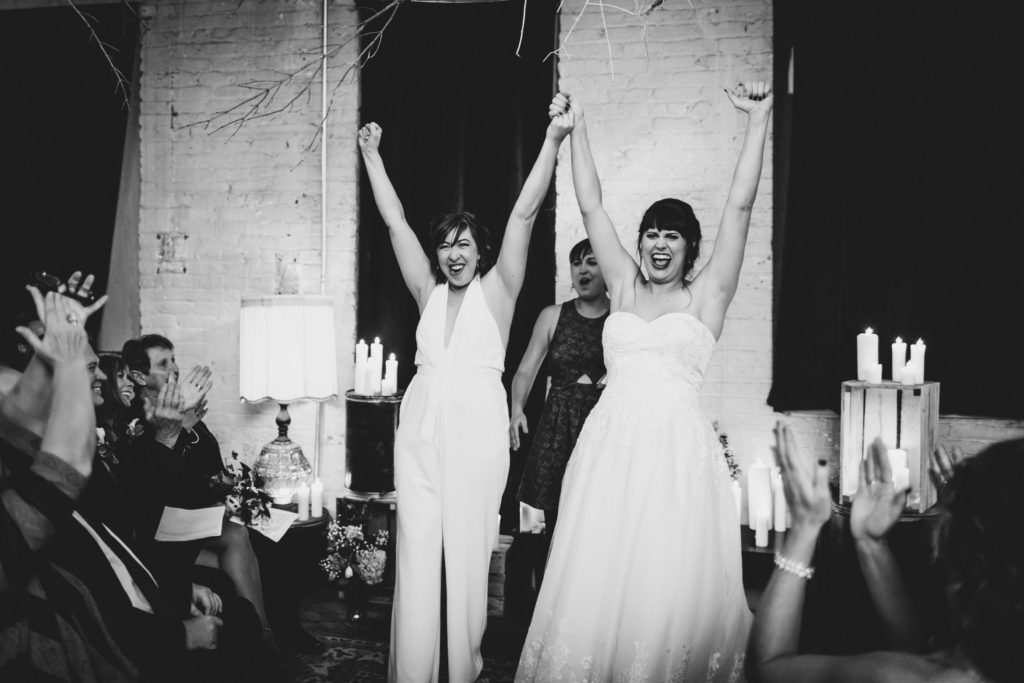
PIP: I know that you consider yourself a feminist, and among feminists, there’s some controversy about taking the spouse’s name upon marriage. You took Lauren’s last name; could you talk a little about what this decision was like for you?
SSG: There is a meaningful reason. I was a little bit reluctant at first, because of the reasons other people are reluctant. I don’t want to give up this part of me. The thing is, there’s two parts. One is that we want to have children and I want to have that family name where we are all a cohesive unit; that feels important to me and to Lauren.
Number two is that, my name — I don’t want to say I was forced into taking my stepdad’s name, but I wasn’t given the option. I took my stepdad’s name when I was 12 and took back my legal name when I was 22 or so. So my last name has always been a point of contention for me and I haven’t identified with it, and it’s actually caused me a lot of pain.
What’s actually interesting is, it’s caused me pain by the men in my life; that’s how these names are handed down to us, by the men in our life, and those men in my life caused me a lot of pain. So to take Lauren’s last name, it feels like finally I’m taking back some power over my name. That’s actually what it is. I am taking back power; I am taking back the narrative of my identity and of how people know me.
PIP: That makes total sense! So I know that for some people, the word “queer” indicates a broad non-hetero sexuality, and for others, a flexibility with gender. And for some, both. Can you describe what it means to you?
SSG: Absolutely. I definitely use it for both. I definitely feel queer about my gender identity and queer in my sexual orientation. The thing is, somebody said this and it blew my goddamn mind:
If you do not believe that there is a gender binary, if you believe that there is a gender spectrum, it completely throws the idea of sexual orientation off kilter. Because if you don’t believe in a binary, you don’t believe in gay and straight.
That really melded those two worlds for me. Because I don’t necessarily identify as firmly woman. I identify as femme, and that’s because I present female. And I’m fine using feminine pronouns, but I feel extremely indifferent about my gender.
And I like to play around with it. I like to play around with my power dynamics, I like to play around with how I present myself. Even though I never firmly present myself as masculine. I don’t feel so strongly convicted of being in the middle of feminine and masculine to ask people to call me by a gender-neutral pronoun. But I feel very flexible in my gender identity, and that’s why I identify as femme or queer. And I think a lot of queer women who present female go by this phrase femme, and I think that’s a new coming about.
PIP: I get it — it’s liberating to realize you don’t have to be so constrained to one role or another.
SSG: Yeah, and my gender identity stuff really started coming out when I met Lauren. I started presenting a lot more tomboy. I had a very short pixie cut. I almost felt an inverse pressure to feel masculine to let her feel more feminine. It that was really fun to try on, and over time, I’ve let myself be more feminine. I have long hair now and wear makeup sometimes.
It’s super interesting, what dating someone of the same sex or trans or gender non-binary, what that does for your own gender identity. Because it makes you ask those questions; “Well, how do I feel in my own body?” Sometimes that answer turns out to be like, “Wow, I’m a lot more flexible with my gender identity that I thought.” Lauren and I have learned a lot about gender through each other.
Keep up with Sarah on Instagram at @sarahshalenephotography!
